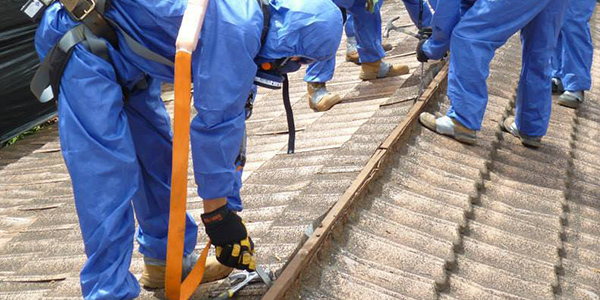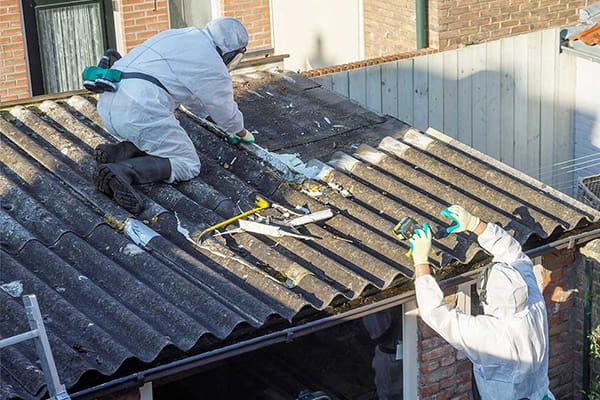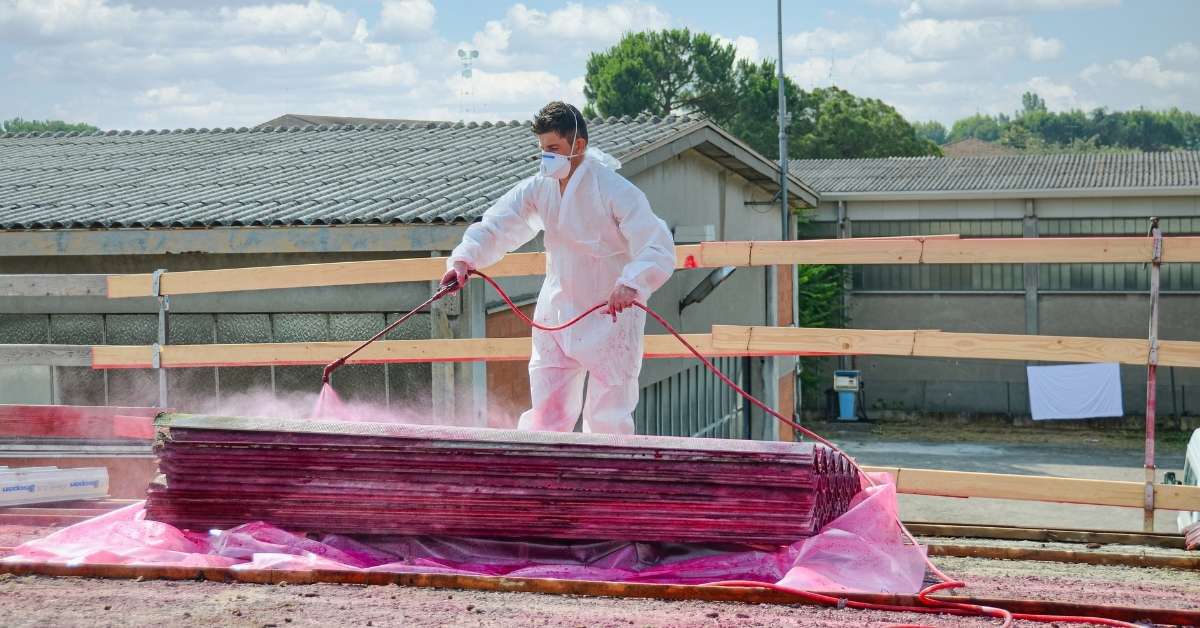Local Regulations For Asbestos Handling Removal And Disposal Of Asbestos
Asbestos management plans are critical instruments for the safe handling and management of asbestos materials in various environments. With the health risks related to asbestos exposure, including lung disease and other serious respiratory conditions, having a complete management plan is essential for any facility that will contain asbestos.
The creation of asbestos management plans involves an intensive assessment of the premises where asbestos could be current. This includes identifying the kinds of materials that contain asbestos and evaluating their situation. Regular inspections are needed as a result of the integrity of asbestos-containing materials can degrade over time, raising the chance of airborne asbestos fibers.

Once the assessment is carried out, the plan must include clear procedures for managing asbestos safely. This contains guidelines on the means to handle, maintain, and, if necessary, remove asbestos-containing materials. Proper labeling and signage are additionally necessary to guarantee that employees and guests are aware of areas that may pose a risk.
Legal Requirements For Asbestos Removal In Nsw How To Get Your Roof Replaced For Under 1000
Training and schooling play a big role in the profitable implementation of asbestos management plans. Employees who could come into contact with asbestos need to be educated about the hazards, safe work practices, and emergency procedures. Regular training sessions can help hold safety on the forefront of workplace culture.
The management plan should define particular responsibilities for staff and management. Designating an asbestos coordinator can streamline the method of monitoring, reporting, and communicating about asbestos-related points. This individual serves as some extent of contact for questions and considerations relating to asbestos safety.
Documentation is a key side of asbestos management plans. Maintaining accurate records of inspections, incidents, training, and maintenance actions is essential for accountability and ongoing risk assessment. This documentation also can prove invaluable in case of regulatory inspections or legal inquiries.
Importance Of Documentation In Asbestos Projects Video Guides For Safe Removal
In addition to identifying materials and implementing safe dealing with practices, the plan should outline response protocols for asbestos-related emergencies. Successful Asbestos Roof Removal Stories. These protocols ought to embrace measures to observe in the event of a cloth breach or suspected fiber release. Providing clear steps may help mitigate risks and ensure swift motion
Periodic review and updating of the asbestos management plan are very important to replicate any modifications in regulations, office situations, or materials current. Continuous improvement is crucial to adapt to new information or applied sciences related to asbestos safety. Stakeholders must be concerned in this process to ensure that the plan remains related and effective.
Community Support For Asbestos Affected Areas Testing, Removal & Disposal Of Asbestos
Compliance with local and national regulations regarding asbestos is non-negotiable. Organizations should keep informed about applicable laws and guidelines that govern asbestos handling and disposal. This helps keep away from legal penalties and enhances the general safety tradition inside the group.
Community awareness is another important factor in effective asbestos management plans. Engaging with native authorities, health companies, and the community can foster a greater understanding of asbestos-related points. This collaboration ensures that each one parties are knowledgeable about potential risks and safety measures in place.
Asbestos management plans do not operate in isolation; they're part of a broader health and safety strategy. By prioritizing the well-being of workers and the encircling community, organizations can contribute to a safer environment. The integration of asbestos management with different safety protocols allows for a holistic method to office safety.
Legal Requirements For Asbestos Removal In Nsw Commercial Roofing Contractor For Removal
The objective of an asbestos management plan is not only compliance but additionally proactive risk management. By effectively identifying hazards and implementing mitigation methods, organizations can considerably reduce the chance of asbestos exposure. This dedication to safety ultimately protects each workers and the underside line.
Effective communication about the asbestos management plan is crucial for fostering a culture of safety. Clear dissemination of knowledge ensures that everyone understands the risks and the measures in place to mitigate them. Providing clear reporting channels encourages employees to voice issues and contribute to safety efforts.
Finally, the importance of periodic monitoring cannot be overstated. Regular audits of the asbestos management plan assist identify areas for improvement and confirm that safety measures are followed. Continuous evaluation creates a suggestions loop, promoting a safer working environment.
In abstract, asbestos management plans serve as crucial frameworks for controlling and managing the risks related to asbestos exposure. Through thorough assessment, effective communication, ongoing training, and regular updates, organizations can create safe environments for his or her employees and the community. The focus should at all times be on proactive measures, compliance with regulations, and a strong safety tradition.
Consultation Services For Asbestos Roof Removal Cost Guide For Asbestos Removal
By making certain that every aspect of the plan is well-executed, organizations can considerably decrease the risks tied to asbestos materials. This ongoing commitment to safety won't solely protect people but also enhance organizational status and belief.
Continuous adaptation and refinement of asbestos management plans will in the end lead to a more educated workforce that prioritizes safety above all. Such a tradition is essential for attaining long-term safety targets and guaranteeing the health of all stakeholders involved.
Safe Asbestos Roof Removal Techniques Testing, Removal & Disposal Of Asbestos
Ultimately, the well-being of workers and the environment ought to guide the development and implementation of any asbestos management strategy. By remaining vigilant and diligent in their strategy, organizations can navigate the complexities of asbestos management successfully.
In conclusion, the roadmap for asbestos safety is difficult however vital. A carefully crafted and executed asbestos management plan, complete with thorough assessments, communication protocols, and ongoing schooling, lays the groundwork for a secure and compliant office. This proactive method fosters a protective environment for all these concerned, solidifying the commitment to safety for the future.
- Asbestos management plans outline protocols for identification, assessment, and management of asbestos-containing materials in various settings, notably in buildings.
- Regular inspections and risk assessments are crucial elements of an asbestos management plan, making certain ongoing monitoring and up to date info relating to potential hazards.
- Training for personnel on asbestos awareness and safety measures is crucial, guaranteeing that workers are educated in regards to the risks and procedures associated to asbestos exposure.
- Development and maintenance of a list of asbestos areas, sorts, and situations enable for knowledgeable decision-making when planning renovations or demolitions.
- Emergency response procedures tailor-made for asbestos-related incidents help reduce health risks during unexpected situations involving asbestos disturbance.
- Effective communication strategies inside a company inform all stakeholders of asbestos management plans, highlighting obligations and inspiring a culture of safety.
- Documentation of all asbestos-related activities, together with removal, encapsulation, or repair, is important for compliance with regulatory standards and for future reference.
- Stakeholder engagement, including occupants and neighboring properties, is vital to boost awareness and tackle concerns concerning asbestos management and safety practices.
- Integrating asbestos management plans with general health and safety policies can create a cohesive strategy to office safety and environmental health.
- Regular reviews and updates of the asbestos management plan guarantee relevance and effectiveness, adapting to any modifications in regulations, building occupancy, or material condition.undefinedWhat are asbestos management plans?
Community Initiatives For Safe Asbestos Removal Cost To Remove Asbestos Garage

Asbestos management plans are paperwork that outline tips on how to manage asbestos on a property. They detail the location, condition, and kinds of asbestos-containing materials, together with methods for safe monitoring, maintenance, and mitigation.
Why do I want an asbestos management plan?
An asbestos management plan is essential for shielding health and safety. It ensures that each one potential asbestos hazards are identified and managed appropriately, minimizing the chance of exposure to individuals on the property.
Monitoring And Maintaining Safety Standards Video Guides For Safe Removal
Who is responsible for creating an asbestos management plan?
Typically, the property owner or employer is answerable for developing and implementing an asbestos management plan. It is often recommended to seek the assistance of with certified professionals or licensed asbestos surveyors to make sure compliance with regulations.

How often ought to my asbestos management plan be reviewed? Best Practices For Asbestos Roof Removal In Sydney.
Asbestos Roof Removal For Home Renovations Asbestos Roof Maintenance Services
Asbestos management plans ought to be reviewed a minimal of every 12 months or whenever vital modifications happen on the property, such as renovations or harm to areas containing asbestos. This ensures that the plan stays up-to-date and effective.
What should I do if my asbestos management plan identifies risks?
If risks are identified, immediate motion ought to be taken according to the plan. This could include repair, encapsulation, or removal of asbestos materials by licensed professionals, together with notifying affected people in regards to the risks and safety measures.
Can I manage asbestos points myself and not utilizing a plan?
Benefits Of Asbestos Roof Removal Removal And Disposal Of Asbestos
It is not advisable to administer asbestos points without a formal plan. Improper dealing with can lead to serious health risks and legal consequences. Consulting a certified professional is crucial for safety and compliance with regulations.
How do I discover a qualified professional for my asbestos management plan?
To find a qualified professional, look for licensed asbestos consultants or surveyors in your area. It is important to check their certifications, expertise, and critiques to ensure they meet regulatory requirements and have a good observe document of safety.
Local Regulations For Asbestos Handling Removal & Replacement Of Roof Asbestos
What occurs if I don’t have an asbestos management plan?
Lack of an asbestos management plan can result in non-compliance with native regulations, leading to heavy fines, legal liability, and increased health risks for occupants. It is essential to have an efficient plan in place to administer asbestos safely.
Is training required for those dealing with asbestos management plans?
Yes, people involved in managing asbestos should receive appropriate training. This consists of understanding the risks, the specifics of the management plan, and safe work practices. Regular training ensures everyone is ready to reply to potential asbestos issues effectively.
removal of asbestos roofing materials a knockout post Michael J. Fox Then & Now!
Michael J. Fox Then & Now! Michelle Pfeiffer Then & Now!
Michelle Pfeiffer Then & Now! Michael Jordan Then & Now!
Michael Jordan Then & Now! Loni Anderson Then & Now!
Loni Anderson Then & Now! Matilda Ledger Then & Now!
Matilda Ledger Then & Now!